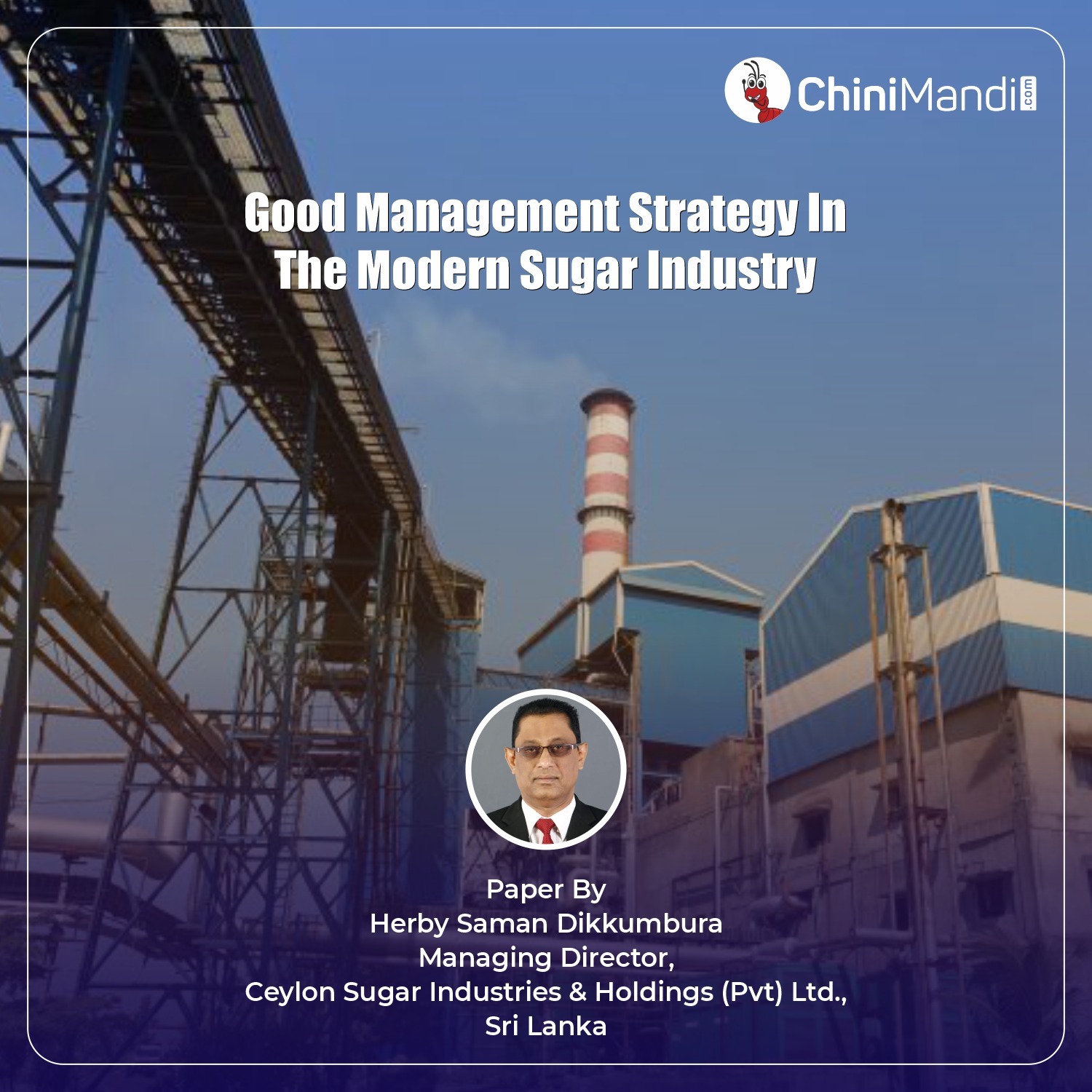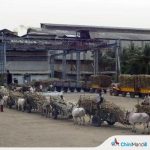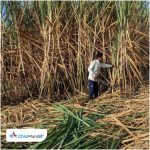Effective management is the backbone of any successful industry, and this is especially
true for the sugar industry. In this sector, management plays a critical role in shaping not
only day-to-day operations but also long-term profitability, as reflected directly in the Profit
and Loss (P&L) statement.
The sugar industry is inherently complex and multidisciplinary. It spans diverse operations
including agriculture, logistics, factory crushing, by-product handling, ethanol distillation,
power generation, and marketing. Each department must function with precision and
accountability, as the performance of one unit can significantly impact the entire value chain.
To achieve a high-quality end product, whether sugar, ethanol, or power every department must adhere to best practices, ensure continuous monitoring, and remain aligned with strategic objectives. From field-level crop planning and mechanization to factory-level process optimization and real-time quality control, integrated management is not optional; it is essential.
This document outlines key strategies and principles for efficient management across all
functional units of a modern sugar enterprise. It serves as a guide to help industry stakeholders enhance operational performance, guarantee product quality, and boost financial outcomes.
1. Strategic Management Framework
1.1 Vision & Mission Alignment:
Vision:
Every sugar enterprise must articulate a clear and compelling vision that emphasizes
sustainability, innovation, and profitability. This long-term vision should reflect the
company’s ambition to lead in agricultural efficiency, clean energy production (via
ethanol and co-generation), and value-added product development.
Mission:
The mission should translate this vision into a daily operational focus. It must drive
performance expectations, guide investment decisions, and unify all departments under
shared values and strategic objectives. For example, a mission might be: “To produce
high-quality sugar and ethanol products sustainably, while empowering farmers,
conserving natural resources, and contributing to national energy goals.”
To ensure alignment:
Departmental KPIs should be directly linked to vision and mission goals
Strategic reviews should occur quarterly to evaluate alignment and adjust course
Leadership should reinforce the mission through consistent communication and decision making frameworks
1.2 Leadership Hierarchy:
A clearly defined leadership structure is essential for the effective management of a sugar enterprise. This includes a well-articulated chain of command, roles, and responsibilities at each level of the organization. Accountability must be embedded at all levels—from executive leadership down to departmental supervisors.
Key components include:
A Chief Executive Officer (CEO) or Managing Director (MD) to oversee the entire enterprise and report to the board.
Functional Directors or General Managers for core areas: Agriculture, Factory Operations, Distillery, Finance, and HR.
Department Heads and Unit Managers with clearly defined responsibilities and authority.
Supervisors and Field Officers at the operational level, empowered to execute plans and report outcomes.
The hierarchy must ensure:
Efficient decision-making with minimal bureaucracy
Responsiveness to operational challenges
Cross-functional coordination between departments
Upward and downward communication flow for effective management feedback
2. Performance Metrics:
To drive excellence, sugar industries must implement clearly defined Key Performance Indicators (KPIs) across all departments. These metrics should measure operational success in terms of quality, efficiency, safety, and profitability.
2.1 Examples include:
Quality KPIs: Sugar recovery percentage, ethanol purity, ICUMSA levels, and lab test pass rates.
Efficiency KPIs: Crushing rate (TCD), downtime hours, energy consumption per ton of cane, fuel-to-steam ratio, fermentation efficiency.
Safety KPIs: Number of reportable incidents, lost-time injury frequency rate (LTIFR), compliance with safety drills and PPE protocols.
Profitability KPIs: EBITDA margins, cost per ton of sugar produced, ethanol yield per liter of molasses, and power export revenues.
2.2 These metrics should be:
Monitored in real time where feasible (e.g., through SCADA or MIS dashboards)
Reviewed monthly and annually
Tied to departmental incentives and performance reviews
3. Department-Wise Operational Strategy
Agriculture Department
✔ Impact of Using AI and Drone Technology on Management in Sugarcane Agriculture
The adoption of AI and drone technology transforms traditional management approaches in sugarcane agriculture by introducing precision, efficiency, and real-time control across operations.
Below are the key areas where these technologies significantly impact management:
1. Enhanced Decision-Making
Data-Driven Planning: AI provides real-time analytics on crop health, growth stages, soil moisture, and climate forecasts, enabling more accurate and timely decisions by managers.
Predictive Management: Forecasting tools help managers anticipate problems such as drought stress, pest outbreaks, or low-yield zones, allowing preemptive action rather than reactive measures.
2. Operational Efficiency
Field Monitoring: Drones reduce the need for manual scouting, enabling managers to monitor hundreds of hectares within hours. This speeds up the diagnosis of field problems and prioritizes urgent interventions.
Input Optimization: AI systems support precise application of fertilizers, water, and pesticides, improving resource management and reducing waste enhancing budget control.
3. Workforce Optimization
Reduced Labor Pressure: Drone-based mapping and spraying replace labor intensive activities, allowing managers to deploy workers more strategically.
Upskilling and Training Needs: Managers must transition from traditional supervisory roles to overseeing digital tools, requiring investment in training and talent development (e.g., drone operators, data analysts).
4. Real-Time Performance Monitoring
KPI Tracking: AI enables daily tracking of key performance indicators (KPIs) such as cane growth rate, input use efficiency, and expected yield per field helping managers respond immediately to underperformance.
Transparency and Accountability: Geo-tagged drone images and automated reports reduce subjectivity and increase traceability in field-level performance.
5. Compliance and Reporting
Regulatory & Certification Support: AI and drone systems generate precise records needed for environmental compliance (e.g., ISO 14001) and sustainability audits (e.g., Bonsucro, Rainforest Alliance).
Improved Reporting to Stakeholders: Visual data from drones and AI dashboards enhances reporting quality to board members, investors, and government agencies.
6. Strategic Resource Allocation
Optimized Scheduling: Insights from AI help in scheduling irrigation, fertilization, and harvesting operations at the right time, avoiding delays and improving supply chain coordination with the factory.
Cost Control and Budgeting: Managers can track real-time costs per hectare and adjust budgets based on AI-based forecasts, avoiding financial overruns.
Conclusion for Management Impact
AI and drone technologies transform sugarcane management from reactive to proactive. They provide managers with enhanced visibility, speed, and control over agricultural operations, facilitating improved planning, superior field performance, and more strategic resource utilization. For estate managers and mill operators, these tools signify not just a technological upgrade but a transition toward smarter, leaner, and more accountable leadership.
✔ Impact of Field-level GPS Mapping on Management
1. Data-Driven Agricultural Planning:
Accurate Land Records: GPS mapping provides precise acreage, field boundaries, and topography, eliminating guesswork and discrepancies in land use.
Customized Crop Planning: Management can allocate sugarcane varieties and inputs (fertilizers, water, etc.) based on field-specific data like elevation, soil type, and slope.
2. Improved Resource Allocation:
Input Efficiency: GPS-mapped fields allow targeted application of fertilizers, water, and pesticides reducing waste and improving cost control.
Mechanization Planning: Helps optimize routes for tractors, harvesters, and transport vehicles, saving time and fuel.
3. Transparent Farmer Management:
Field Ownership & Lease Tracking: Management can maintain a reliable geo-database of each farmer’s fields, simplifying contract farming and payment systems.
Incentive Programs: Enables performance tracking by field (e.g., yield per hectare), helping design more effective farmer incentive and support schemes.
4. Monitoring and Compliance:
Crop Health Surveillance: Management can use satellite or drone data overlaid on GPS maps to monitor crop growth, stress zones, and disease outbreaks.
Compliance & Certification: Essential for sustainable agriculture certifications (e.g., Bonsucro, Rainforest Alliance), which often require traceability of field-level practices.
5. Enhanced Logistics and Harvest Planning:
Harvest Scheduling: GPS data helps plan staggered harvesting by maturity zones and field distance, ensuring a continuous supply to the mill.
Route Optimization: Management can assign optimal field-to-factory routes, reducing transport delays and improving cane freshness.
6. Long-Term Strategic Planning:
Yield Mapping and Forecasting: GPS-linked yield data over multiple seasons allows managers to forecast production trends and plan capacity expansions or adjustments.
Land Use Expansion: Enables identification of nearby cultivable land for scaling operations or introducing new cane clusters.
Summary:
Field-level GPS mapping empowers management with real-time, geo-specific data to improve agricultural planning, reduce costs, enhance traceability, and optimize logistics laying the foundation for smart, scalable, and sustainable sugarcane operations.
✔ Impact of Best Agronomic Practices (BAP) Manuals on Management
1. Standardization of Field Operations:
BAP manuals provide uniform guidelines for all agronomic activities—from land preparation to harvesting, ensuring consistency across large-scale sugarcane cultivation.
Management can monitor performance more easily when all field teams follow the same practices and protocols.
2. Improved Productivity and Yield Forecasting:
BAPs are designed based on research and field trials to maximize crop yield and quality under local agro-climatic conditions.
Managers can predict yields more accurately, which helps in processing capacity planning and supply chain optimization.
3. Resource Efficiency:
BAPs guide optimal use of inputs like fertilizers, irrigation water, herbicides, and labor.
Leads to cost savings and better ROI, as management reduces input waste while maintaining output quality.
4. Risk Mitigation:
Manuals include protocols for pest control, disease management, and climate resilience (e.g., drought-tolerant varieties or drainage management). ∙ Helps management reduce the impact of unpredictable weather and pest outbreaks, thus protecting the business from production shocks.
5. Training and Extension Management:
BAP manuals form the basis for training field staff and farmers. ∙ Management can develop structured training programs, field demonstrations, and evaluation tools based on these manuals, improving workforce competence and farmer relations.
6. Compliance and Certification Support:
BAPs align with the requirements of sustainability certifications like Bonsucro and Rainforest Alliance, which demand documented, field-level best practices. ∙ Supports traceability and audit-readiness, easing the certification process and improving credibility with investors and regulators.
7. Performance Benchmarking:
With BAPs in place, management can set and monitor KPIs such as tonnage per hectare, cane maturity index, water use efficiency, etc., enabling data driven decision-making and continuous improvement.
8. Strengthens Farmer Relationships:
When used in out-grower models or contract farming, BAPs help build trust and collaboration by providing farmers with proven guidelines and technical support.
This enhances supply reliability and long-term loyalty.
Summary:
Best Agronomic Practices (BAP) Manuals are essential management tools that bring structure, predictability, and accountability to the agricultural side of the sugar value chain. They enable efficiency, yield optimization, risk reduction, and compliance, making them a core element of any modern sugar estate’s management strategy.
✔ Impact of Fertilizer and Water-Use Efficiency Programs on Management
Implementing fertilizer and water-use efficiency programs transforms how a sugar operation manages its agricultural inputs, costs, and sustainability profile. These programs are designed to optimize the timing, quantity, and method of applying water and nutrients especially nitrogen, phosphorus, and potassium, based on crop stage, soil health, and weather conditions.
Key Management Impacts:
∙ Cost Control:
By reducing over-application and waste, management can significantly lower input costs. Precision tools like fertigation and drip systems ensure that fertilizers and water are delivered directly to the root zone, reducing losses due to evaporation, runoff, or leaching.
∙ Yield Optimization:
Proper nutrient and moisture balance enhances cane growth, brix development, and disease resistance. This leads to better yields per hectare, which improves supply chain planning and mill throughput targets.
∙ Sustainability and Compliance:
Efficient use of inputs aligns with sustainability standards (e.g., Bonsucro, ISO 14001). Management can use these programs to meet environmental regulations and certification criteria, which are increasingly required by buyers and financiers.
∙ Technology-Driven Monitoring:
These programs often involve soil moisture sensors, leaf nutrient diagnostics, and GIS based fertigation scheduling. For management, this data enables informed decisions, KPI tracking, and proactive risk management.
∙ Farmer Support and Extension:
In out-grower models, these efficiency programs can be implemented via training and shared infrastructure. This improves farmer loyalty, reduces production variability, and strengthens supply reliability.
∙ Water Resource Management:
Water-saving practices are especially critical in regions with limited or seasonal rainfall. Management must plan for water allocations, tank capacities, and irrigation infrastructure while ensuring minimal environmental impact.
Fertilizer and Water-Use Efficiency Programs:
These programs are designed to optimize the application and management of fertilizers and irrigation in sugarcane cultivation, aiming to maximize crop yield and quality while minimizing waste, cost, and environmental impact.
Key components include;
Precision Fertilization: Using soil testing and crop nutrient demand data to apply the right type and amount of fertilizers at the right time and location. This prevents over-fertilization, reduces nutrient runoff, and improves soil health.
Integrated Nutrient Management (INM): Combining organic and inorganic fertilizers to enhance nutrient availability and soil structure sustainably. ∙ Water Management Techniques: Implementing efficient irrigation methods such as drip, sprinkler, or controlled flooding tailored to the crop’s growth stage and local climatic conditions.
Scheduling Irrigation: Using soil moisture sensors, weather data, and evapotranspiration models to irrigate only when necessary, avoiding overwatering or drought stress.
Training and Monitoring: Educating farmers and field workers on best practices and continuously monitoring fertilizer and water use to identify opportunities for improvement.
By improving fertilizer and water-use efficiency, these programs reduce input costs, enhance crop productivity, conserve natural resources, and minimize environmental pollution.
✔ Impact of Farmer Engagement and Incentive Plans on Management:
These are structured programs designed to build strong, collaborative relationships between sugar companies and their affiliated farmers. Effective engagement ensures farmers are motivated, informed, and aligned with the company’s quality and productivity goals.
Key elements include;
Regular Communication: Frequent interaction through meetings, training sessions, and digital platforms to share best practices, updates on crop management, and market information.
Capacity Building: Providing technical support, training, and resources to improve farmers’ skills in agronomy, pest control, and sustainable practices. ∙ Incentive Schemes: Financial rewards such as premium pricing for high quality cane, timely payments, yield-based bonuses, and subsidies for inputs or machinery.
Recognition Programs: Awards or certifications to acknowledge outstanding farmers, fostering pride and competition.
Feedback Mechanisms: Channels for farmers to voice concerns and suggestions, ensuring their needs are addressed.
By implementing effective farmer engagement and incentive plans, sugar enterprises foster loyalty, improve cane quality and yields, and strengthen the overall supply chain sustainability.
✔ Impact of Logistics & Cane Transport on Management
Logistics and cane transport play a critical role in the overall efficiency, cost structure, and sustainability of a sugar project. Poorly managed logistics can drastically reduce profitability, while efficient systems can enhance both agricultural and industrial performance. Below is how it impacts management across strategic, operational, and financial levels:
1. Operational Management Impact
∙ Timely Cane Supply: Management must ensure that cane reaches the mill within 24–48 hours of harvesting to maintain sucrose quality. Delays lead to:
Reduced sugar recovery.
Increased spoilage and processing losses.
Fleet Management:
Requires organizing and tracking a large number of trucks, tractors, and trailers.
GPS and telematics may be used for routing, fuel control, and monitoring delivery times.
Loading/Unloading Efficiency:
Need to manage queuing at weighbridges and unloading points to avoid congestion and downtime at the factory.
Scheduling and Route Optimization:
Cane harvesting and transport must be synchronized to avoid bottlenecks and underutilization of crushing capacity.
2. .Strategic Management Impact
∙ Infrastructure Planning:
Roads, bridges, and loading bays must be planned and maintained. o Management may need to coordinate with government or invest in private roads within estates.
Harvesting Windows:
Transport capacity defines how large a harvesting window can be covered per day.
Strategic planning is needed to balance field maturity with transport reach.
Outgrower Relations:
Timely cane pickup builds trust with farmers and secures future supply.
Poor logistics result in farmer dissatisfaction and attrition from the supply chain.
3. Cost and Financial Management
∙ High Cost Component:
Transport can represent 15%–25% of the total cane procurement cost.
Management must control fuel costs, vehicle maintenance, labor, and third-party contractor charges.
Capital Investment Decisions:
Choice between owning a fleet vs. outsourcing impacts capital structure and risk.
Cost Recovery Systems:
For outgrowers, fair and transparent transport cost sharing or subsidies must be planned and communicated.
4. Technology and Automation
∙ Real-Time Tracking:
GPS tracking of cane loads enables better coordination and reduces theft or misrouting.
Transport Management Systems (TMS):
Automates dispatch, monitoring, and cost analysis, enabling more data-driven decision-making.
GIS Mapping:
Used to plan optimal harvesting routes and staging points, minimizing transport distances.
5. Environmental & Regulatory Compliance
∙ Vehicle Emissions and Road Safety:
Management must comply with emission standards and road transport regulations.
∙ Dust, Spillage, and Noise Control:
Especially important when passing through villages or public roads.
Summary of Key Impacts
| Area Impact on Management | |
| Operations | Mill downtime, fleet coordination, timely supply |
| Strategic Planning | Harvest planning, road networks, outgrower confidence |
| Financials | High transport costs, ROI on fleet, cost control |
| Technology | Need for GPS, automation, real-time data |
| Compliance | Licensing, safety, environmental impact |
✔ Impact of Smart Weighbridge Systems on Management
Smart weighbridge systems are more than just tools for weighing sugarcane they are essential digital assets that directly affect accuracy, transparency, efficiency, and trust throughout the entire supply chain. Their influence on management encompasses operational control, financial integrity, farmer relations, compliance, and data analytics.
1. Operational Efficiency
∙ Real-time Data Capture: Every truckload is logged instantly, reducing manual errors and delays in recordkeeping.
∙ Faster Turnaround: Automated systems reduce queue times, enabling higher truck throughput per day.
∙ Integration with Fleet Management:
Enables seamless tracking of vehicle arrival, unloading, and departure.
Helps in managing staggered scheduling to avoid congestion.
2. Financial Control
Minimizes Pilferage and Overbilling:
Accurate weight prevents inflated payments to suppliers or collusion.
Tamper-proof weigh tickets with digital signatures reduce fraud. ∙ Automated Deductions:
The system can automatically deduct tare weight, impurities, or standard losses, ensuring fair payments.
Cost Allocation:
Helps calculate transportation and logistics costs per MT of cane more precisely.
3. Farmer & Outgrower Relationship Management
∙ Transparent Payments:
Farmers get an instant receipt of cane weight, building trust.
SMS alerts or mobile app integration can inform farmers directly. ∙ Dispute Reduction:
Video and photographic capture of each weighing can be used to resolve conflicts fairly and quickly.
Incentivizing Performance:
o Integration with quality analysis (e.g., sucrose content sensors) allows premium payments for higher quality cane.
4. Compliance and Auditability
∙ Regulatory Reporting:
Auto-generation of daily/monthly reports for audit and government compliance.
∙ Tamper-Proof Logs:
Ensures traceability and audit trails for every transaction.
GST/VAT and Tax Compliance:
Automated linkage with ERP and accounting systems streamlines financial compliance.
5. Data-Driven Decision-Making
∙ Yield Mapping and Farm Productivity Analytics:
Data from GPS-tagged trucks linked with farm maps helps identify high or low performing fields.
∙ Daily Cane Intake vs Crushing Capacity:
Real-time dashboard for management to monitor performance against target crushing rate.
∙ Supply Chain Optimization:
Historical data helps in predicting peak supply periods and planning future harvest/transport needs.
6. Security and Integrity
∙ ANPR (Automatic Number Plate Recognition):
Ensures only authorized vehicles are weighed.
∙
RFID Integration:
Automatically identifies growers, plots, and harvest groups linked to each load.
∙ CCTV Monitoring:
Visual confirmation for every transaction prevents manipulation and corruption.
Summary Table:
| Impact Area Management Benefits | |
| Operations | Faster truck handling, reduced human error, better throughput |
| Finance | Accurate payment, fraud reduction, improved budgeting |
| Farmer Relations | Transparency, timely payments, lower disputes |
| Compliance | Full audit trails, automated reporting, regulatory alignment |
| Analytics | Yield tracking, crushing performance monitoring, supply chain insights |
| Security | Prevents tampering, ensures vehicle and data authenticity |
✔ Impact of Continuous Crushing with Minimal Downtime on Management
Continuous crushing with minimal downtime is a key performance goal in modern sugar industry operations. It refers to maintaining uninterrupted cane processing throughout the crushing season, minimizing mechanical stoppages, supply disruptions, and operational inefficiencies. For management, this operational stability brings several strategic benefits:
1. Enhanced Operational Efficiency
Minimal downtime ensures maximum utilization of the plant’s installed crushing capacity. It enables synchronized functioning of all sections mill house, boilers, turbines, and juice processing—resulting in consistent throughput and higher sugar recovery. Stable operations also reduce fluctuations in energy consumption, steam pressure, and juice quality, improving overall process control.
2. Cost Optimization
Frequent stoppages lead to energy wastage, increased wear and tear, and labor inefficiencies. Continuous crushing reduces fuel consumption per ton of cane, minimizes overtime costs, and lowers maintenance expenditure by shifting the focus from reactive to preventive maintenance. Efficient resource utilization leads to a more sustainable cost structure.
3. Improved Cane Supply Chain Management
Management can coordinate harvesting and transport operations more efficiently when mill operations are stable. Timely unloading of cane minimizes in-field delays and post-harvest deterioration, preserving sucrose content and supporting accurate farmer payments. It also allows for better vehicle turnaround time and fewer bottlenecks at the weighbridge and unloading yard.
4. Higher Workforce Productivity
Consistent operations support predictable shift scheduling and better workload distribution. Worker morale and discipline improve in an environment with fewer emergency shutdowns. Training programs and skill development can be implemented more effectively in such a stable setting.
5. Data-Driven Management and Decision-Making
Continuous crushing enables real-time data capture on plant performance, yield metrics, downtime patterns, and recovery rates. Management gains access to timely and accurate reports, supporting proactive decision-making, performance benchmarking, and predictive maintenance planning.
6. Stakeholder Confidence and Institutional Credibility
Sustained operations enhance the credibility of the mill among key stakeholders—farmers, investors, regulators, and buyers. It demonstrates professionalism, reliability, and commitment to long-term industry development, export-oriented ventures.
Conclusion:
Continuous crushing is not only a technical goal but a management strategy. It reflects a high level of coordination across departments, integration of technology, and leadership commitment. For larger sugar mill, the ability to run operations with minimal downtime directly translates into improved profitability, sustainability, and stakeholder trust.
✔ Impact of High-Efficiency Boilers and Evaporators on Management
The integration of high-efficiency boilers and evaporators is a cornerstone of modern sugar mill engineering. These technologies significantly influence factory performance by improving steam economy, reducing fuel usage, and stabilizing energy flows. For management, their impact extends beyond operational gains into financial, environmental, and strategic areas.
1. Enhanced Energy Efficiency and Cost Control
High-efficiency boilers (e.g., high-pressure, multi-drum boilers) reduce steam consumption per ton of cane crushed. Similarly, multiple-effect and falling-film evaporators minimize energy losses during juice concentration. This leads to significant savings in bagasse fuel and supplementary fuels like coal or oil, thereby reducing operating costs and improving the plant’s thermal efficiency.
2. Improved Process Stability and Product Quality
Stable steam and temperature delivery from advanced boilers and evaporators ensure consistent juice processing, minimizing fluctuations in brix, purity, and color. Management benefits from smoother downstream operations (e.g., crystallization, centrifugation), reduced product losses, and better sugar quality that meets market and export standards.
3. Environmental and Regulatory Compliance
Modern boilers feature better combustion control, low-NOx burners, and fly ash management systems, helping the factory stay within emission limits. Efficient evaporators also reduce condensate discharge and water usage. This supports management’s goals around ISO 14001 compliance, Bonsucro certification, and national environmental regulations.
4. Lower Maintenance and Downtime
New-generation boilers and evaporators come with automated controls, pressure/temperature sensors, and self-cleaning systems. This minimizes unplanned downtime and supports predictive maintenance, allowing management to shift from reactive firefighting to proactive asset management.
5. Increased Co-Generation Revenue
High-efficiency boilers generate more high-pressure steam, enabling enhanced co-generation of electricity using back-pressure or extraction condensing turbines. This creates a surplus power opportunity, where the excess electricity is exported to the grid, generating an additional revenue stream and improving the project’s financial viability.
6. Better Data for Decision-Making
Advanced control systems and SCADA integration in these systems provide real-time data on fuel usage, steam balance, and heat recovery. This enables management to monitor KPIs, optimize performance, and support technical audits with accurate reporting.
Conclusion:
The adoption of high-efficiency boilers and evaporators strengthens the mill’s energy backbone and elevates the management function from routine operations to strategic performance oversight. These technologies are essential for achieving cost leadership, environmental stewardship, and operational excellence in a competitive sugar industry landscape.
✔ Impact of Bagasse Moisture Control on Management
Bagasse, the fibrous residue left after sugarcane crushing, is a vital fuel source for boilers in sugar mills. Controlling its moisture content—ideally between 45%–50% has a direct impact on the mill’s energy balance, operational efficiency, and sustainability goals. Effective bagasse moisture management delivers significant benefits to management across technical, financial, and environmental domains.
1. Improved Boiler Efficiency and Steam Generation
High-moisture bagasse contains more water and less combustible fiber, which reduces its calorific value. This results in incomplete combustion and lower steam output. By maintaining optimal moisture levels, boilers achieve higher thermal efficiency, reducing the need for auxiliary fuels (e.g., coal or furnace oil). Management gains better control over fuel costs and enhances energy self reliance.
2. Reduction in Fuel Cost and Material Wastage
Moisture-controlled bagasse burns more efficiently, minimizing unburnt material and fly ash. This reduces fuel wastage, boiler fouling, and ash disposal costs. Efficient moisture control can lead to 10–15% savings in boiler fuel efficiency, helping management achieve budget targets and cost competitiveness.
3. Enhanced Co-Generation and Power Export
Better combustion from drier bagasse means more high-pressure steam is generated, which can be used for electricity generation in co-gen units. This increases the quantity of power exported to the national grid, generating additional revenue and improving the plant’s overall energy footprint. Management can plan electricity sales more reliably and improve financial projections.
4. Lower Maintenance and Downtime
Reduced moisture leads to cleaner combustion, which minimizes slagging, soot accumulation, and corrosion in boiler tubes. This lowers the frequency of maintenance shutdowns and extends the lifespan of critical equipment. For management, this means less production disruption and lower annual maintenance expenditure.
5. Environmental Compliance and Sustainability
Efficient bagasse combustion reduces greenhouse gas emissions, particulate matter, and stack pollution. This helps the factory align with environmental regulations in the country and sustainability certifications such as Bonsucro, ISO 14001, and Rainforest Alliance. Demonstrating environmental responsibility enhances the mill’s brand image and export potential.
6. Data-Driven Control and Automation
Moisture meters and online monitoring systems allow for real-time tracking of bagasse quality. Integrating this data with boiler control systems supports automated fuel-feeding adjustments and better combustion control. Management can use this data for technical analysis, process audits, and performance reporting.
Conclusion:
Bagasse moisture control is not just a technical concern; it is a strategic lever for management to reduce costs, improve energy efficiency, meet environmental goals, and increase profitability. By investing in moisture monitoring technologies, effective milling practices, and smart boiler integration, management ensures that the sugar factory operates with maximum resource efficiency and minimum environmental impact.
✔ Impact of Steam and Energy Balance Monitoring on Management
Effective steam and energy balance monitoring is central to optimizing the performance of a sugar mill, where steam is both a driving force for machinery and a key input for the sugar and ethanol production processes. A real-time understanding of steam generation, distribution, and consumption allows management to make informed, proactive decisions that enhance efficiency, reduce costs, and improve plant sustainability.
1. Improved Operational Control
Steam is generated primarily from bagasse combustion and is used across multiple units: mill drives, juice heating, evaporation, crystallization, distillation, and co-generation. Monitoring the steam balance ensures each section receives the required pressure and flow, preventing underperformance or energy bottlenecks. Management can thus avoid process disruptions, improve throughput, and maintain consistent sugar recovery.
2. Enhanced Energy Efficiency
By mapping how much energy is produced and where it is consumed, management can identify inefficiencies such as:
∙ Steam leaks
∙ Overuse in non-critical areas
∙ Heat loss through uninsulated pipelines
With this visibility, corrective actions can be taken to reduce steam consumption per ton of cane, improving the plant’s overall energy ratio (kg steam per ton of cane).
3. Reduced Fuel Consumption and Cost Savings
A well-monitored energy balance allows the mill to optimize bagasse usage and minimize reliance on auxiliary fuels. This leads to substantial savings in fuel costs and better utilization of waste energy (e.g., condensate recovery, waste heat). Management can use this data to recalibrate operating parameters for improved cost performance.
4. Better Co-Generation and Power Export Planning
Real-time steam balance monitoring supports the stable operation of turbines and cogeneration systems, ensuring sufficient high-pressure steam for electricity production. Management gains the ability to plan power export schedules more accurately and maximize revenue from surplus electricity sold to the national grid.
5. Strategic Maintenance and Equipment Planning
Energy balance trends reveal the performance of boilers, turbines, and condensers over time. Anomalies in steam demand or pressure drops can signal equipment inefficiency or deterioration. This enables predictive maintenance, reducing unexpected breakdowns and extending asset life critical for effective capital planning.
6. Regulatory Compliance and ESG Reporting
Accurate steam and energy data support the factory’s compliance with national energy use standards and environmental reporting requirements. It also helps prepare documentation for ISO 50001 (Energy Management System) certification and Bonsucro sustainability audits. This strengthens the factory’s environmental credentials and builds investor and buyer confidence.
7. Informed Decision-Making and Real-Time KPI Tracking
By integrating steam and energy balance monitoring into a centralized SCADA or ERP system, management can:
∙ Track key energy KPIs daily
∙ Benchmark unit-wise efficiency
∙ Make data-driven decisions on production planning and resource allocation
Conclusion:
Steam and energy balance monitoring transforms energy management from a back-end technical function into a strategic leadership tool. It empowers management to optimize operations, control costs, meet sustainability goals, and deliver higher value across the sugar production chain.
✔ Process and Quality Control
SCADA-Based Automation: Impact on Management
SCADA (Supervisory Control and Data Acquisition) is a centralized automation system used to monitor, control, and optimize industrial processes in real time. In a sugar mill—where multiple processes such as crushing, juice heating, evaporation, crystallization, distillation, and co-generation operate simultaneously SCADA-based automation plays a critical role in delivering consistent quality, operational reliability, and strategic oversight. Its impact on management is transformative.
1. Real-Time Process Monitoring and Control
SCADA enables centralized visibility of process variables such as temperature, pressure, flow rate, pH, and brix across the plant. This ensures:
∙ Immediate detection of deviations
∙ Instant alarms for critical faults
∙ Remote adjustment of process parameters
For management, this means enhanced control over production quality, yield optimization, and quicker response to process abnormalities.
2. Improved Product Quality and Consistency
By maintaining tight control over critical process parameters, SCADA reduces human error and variation in product output. This ensures: ∙ Stable sugar crystal size and purity
∙ Consistent ethanol concentration
∙ Uniform molasses quality
Management benefits from fewer customer complaints, a stronger market reputation, and compliance with regulatory product standards.
3. Operational Efficiency and Labor Optimization
Automation allows for fewer manual interventions, reducing labor dependency in control rooms and field operations. This enables better deployment of skilled technicians and reduces risk of fatigue-related mistakes. For management, this results in lower manpower costs, improved workforce safety, and more streamlined shift planning.
4. Centralized Data Logging and Reporting
SCADA systems automatically log historical process data, generate daily/weekly/monthly reports, and offer dashboards for KPI tracking. This supports:
∙ Process audits
∙ Root cause analysis of faults
∙ Quality control documentation
Management can use this data for performance reviews, compliance audits, and strategic planning.
5. Enhanced Predictive Maintenance and Downtime Reduction SCADA systems integrate with sensors to track equipment health (e.g., motor load, bearing vibration, and steam pressure). Early detection of abnormalities helps prevent equipment failures and reduce unplanned downtimes. Management can schedule preventive maintenance proactively, reducing cost and disruption.
6. Energy and Utility Optimization
SCADA allows for better control of steam, power, and water usage, ensuring efficient resource allocation. For example, controlling evaporation stages or optimizing boiler feed can reduce energy consumption. Management gains from lower utility costs and a reduced environmental footprint.
7. Decision Support and Strategic Oversight
With access to real-time dashboards, mobile alerts, and graphical trends, SCADA becomes a decision support system for plant managers and executives. It empowers leadership with:
∙ Real-time visibility of plant performance
∙ Early warnings on production bottlenecks
∙ Data to justify capex or process improvements
Conclusion:
SCADA-based automation redefines how management interacts with the sugar mill. It shifts the focus from reactive control to proactive optimization, enabling smarter decisions, higher quality assurance, and long-term competitiveness. For modern sugar factories, SCADA is not just a technical upgrade it is a foundation for digital transformation and performance-driven management.
✔ Impact of Inline Brix, Pol, and Purity Monitoring on Management
Inline monitoring of brix, pol (sucrose content), and juice purity using digital sensors and real-time analyzers is a modern quality control tool in sugar processing. These parameters are critical in evaluating juice quality, milling performance, and final sugar recovery. For management, deploying inline monitoring systems enhances decision-making, operational accuracy, and profitability.
1. Real-Time Quality Assurance
Inline instruments continuously measure:
∙ Brix (total dissolved solids)
∙ Pol (percent sucrose in juice)
∙ Purity (Pol/Brix ratio)
This allows immediate detection of process deviations (e.g., dilution, low sucrose extraction, contamination) and enables instant corrective action. Management can ensure consistent product quality and avoid downstream losses.
2. Higher Sugar Recovery and Yield Optimization
Real-time monitoring during juice extraction and clarification helps maximize sucrose extraction from cane. By adjusting mill settings, imbibition water, and juice heating in real time, sucrose losses in bagasse and filter cake are minimized. This directly boosts overall recovery, improving factory profitability and meeting production targets.
3. Reduced Dependence on Manual Sampling
Traditional quality checks depend on laboratory sampling every 30–60 minutes, which introduces delays and possible human errors. Inline analyzers eliminate these lags and provide continuous, high-frequency data. Management benefits from:
∙ Reduced labor costs in the lab
∙ Fewer errors and sample inconsistencies
∙ Faster process feedback loops
4. Accurate Farmer Payment and Cane Quality Assessment
With inline pol and purity data available during cane crushing, farmer payments can be linked to actual sucrose content rather than weight alone. This builds transparency, strengthens farmer trust, and encourages delivery of fresh, high-quality cane. For management, it improves grower relations and reduces payment disputes.
5. Improved Process Efficiency and Equipment Control
Monitoring Brix and purity across the evaporator and crystallizer sections helps optimize:
∙ Juice concentration
∙ Pan boiling
∙ Massecuite handling
This supports better crystal formation, reduced sugar losses in molasses, and improved boiler efficiency, all of which lead to higher performance KPIs. Management can fine-tune equipment operation through data-backed strategies.
6. Data-Driven Decision Making
Inline systems feed data into the plant’s SCADA or ERP systems, supporting: ∙ Daily performance tracking
∙ Historical quality trend analysis
∙ Audit and compliance documentation
This enables factory management to implement continuous improvement programs and benchmark across crushing seasons.
7. Sustainability and Waste Minimization
Better control of juice quality leads to less chemical usage in clarification, reduced effluent generation, and more efficient fuel usage in evaporation. This helps meet environmental standards and supports sustainability reporting under Bonsucro or ISO 14001 frameworks.
Conclusion:
Inline monitoring of brix, pol, and purity transforms process control from periodic and reactive to real-time and proactive. For management, it offers a competitive edge by ensuring higher product quality, better recovery, improved stakeholder trust, and smarter, data-backed decisions.
✔ Impact of Multi-Pressure Distillation Columns on Management
Multi-pressure distillation columns are a modern and energy-efficient configuration used in ethanol distilleries to separate ethanol from fermented wash using varying pressure levels across different column sections. Unlike conventional single-pressure systems, these setups use atmospheric, vacuum, and pressure columns in combination to enhance alcohol recovery, product purity, and energy conservation.
For management, adopting multi-pressure distillation has a profound impact across operations, finance, sustainability, and compliance.
1. Higher Product Yield and Alcohol Recovery
Multi-pressure columns allow more precise separation of ethanol from impurities, increasing recovery rates by up to 96–98%. This results in: ∙ Higher absolute alcohol production per unit of wash
∙ Reduced ethanol losses in spent wash and fusel oil
For management, this directly translates to higher revenues from the same raw material input and improved ROI from fermentation capacity.
2. Superior Product Quality and Versatility
This configuration enables flexible production of:
∙ Fuel ethanol (99.5%)
∙ Extra Neutral Alcohol (ENA)
∙ Rectified Spirit (RS)
∙ Industrial-grade ethanol
The ability to switch between product grades with minimal reconfiguration improves market responsiveness. Management gains a competitive advantage by targeting diverse markets pharmaceuticals, fuel blending, beverages, and sanitizers.
3. Significant Energy Savings
The multi-pressure design enables heat integration between columns, where energy from one column (e.g., rectifier) pre-heats the feed for another. This reduces overall steam consumption by up to 30%, lowering fuel costs and enhancing boiler efficiency. Management benefits from:
∙ Reduced operational expenditure (OPEX)
∙ Lower greenhouse gas emissions
∙ Improved energy KPIs (liters of ethanol per kg of steam)
4. Smaller Footprint and Modular Layout
Modern multi-pressure systems are often skid-mounted and compact in design, requiring less space and civil infrastructure. This leads to:
∙ Lower installation costs
∙ Easier maintenance and expansions
∙ Faster commissioning time
Management can better plan plant layout, utilities, and future capacity additions.
5. Improved Compliance and Safety
With automated controls and multi-stage degassing, the system maintains strict quality, pressure, and temperature tolerances. This ensures:
∙ Reduced risk of explosion or overheating
∙ Consistent product within regulatory limits (especially important for ENA and pharma-grade alcohol)
This helps management maintain compliance with excise departments, ISO standards, and international safety norms, minimizing legal and reputational risks.
6. Real-Time Monitoring and Automation Compatibility
Multi-pressure distillation systems are easily integrated with SCADA and PLC-based automation, enabling real-time tracking of:
∙ Column pressures
∙ Reflux ratios
∙ Final alcohol purity
This empowers management to take data-driven operational decisions and reduce dependency on manual control.
Conclusion:
Multi-pressure distillation columns offer management a powerful tool to maximize ethanol yield, ensure product versatility, cut energy costs, and maintain regulatory compliance. They are essential for achieving sustainable, high-margin operations in a modern distillery integrated with sugar production.
✔ Impact of Fermentation Optimization on Management
Fermentation optimization refers to enhancing the microbial conversion of sugars (mainly sucrose, glucose, and fructose from sugarcane juice, syrup, or molasses) into ethanol through controlled environmental, biochemical, and operational parameters. Since fermentation is the core of ethanol production, its efficiency directly affects both output and profitability. Optimizing this process yields measurable benefits for plant operations, resource efficiency, and strategic management.
1. Higher Ethanol Yields
Through the use of:
∙ High-efficiency yeast strains
∙ Controlled pH, temperature, and nutrient levels
∙ Appropriate residence time and agitation
Fermentation efficiency can reach up to 90–92% conversion of fermentable sugars, maximizing ethanol yield from each ton of input. For management, this leads to increased output per batch, reduced raw material consumption, and enhanced profitability.
2. Reduced Fermentation Time
By eliminating process bottlenecks and maintaining ideal fermentation conditions, batch times can be shortened from 24 hours to 18 or even 14–16 hours in optimized systems. This allows more fermentation cycles per day, increasing daily alcohol production without expanding plant size or equipment. Management can thus achieve higher productivity from existing infrastructure.
3. Consistent and Predictable Output
Optimization stabilizes microbial activity and minimizes batch failures or underperformance. Consistency in ethanol concentration (8–10% v/v) improves distillation efficiency and reduces stress on downstream equipment. Management benefits from more predictable inventory planning, smoother operations, and fewer production losses.
4. Lower Contamination Risk
A well-optimized process includes proper sanitation, controlled air exposure, and precise nutrient dosing, which drastically reduces bacterial contamination, one of the leading causes of fermentation failure. This enhances process reliability and protects against costly shutdowns, allowing management to focus on continuous production with minimal risk.
5. Reduced Utility and Resource Costs
Efficient fermentation consumes less steam and water per liter of ethanol produced, due to:
∙ Shorter processing times
∙ Lower cooling requirements
∙ Improved heat recovery integration
This leads to reduced utility bills and improved environmental sustainability, which is a strategic priority for management, especially in ESG (Environmental, Social, and Governance) reporting.
6. Simplified Compliance and Audit Readiness
Optimized fermentation maintains tighter control over excise-regulated volumes, alcohol strength, and waste generation (e.g., spent wash). This simplifies compliance with:
∙ Excise laws and volume reporting
∙ Environmental permits
∙ ISO 9001 and ISO 14001 audits
Management benefits from fewer regulatory violations and stronger relationships with government agencies.
7. Enhanced Capacity Utilization and Investment Planning
With higher fermentation efficiency, a plant can operate at full or even surplus capacity, reducing per-liter fixed costs. This provides management with solid performance metrics to justify future expansions, loans, or joint ventures, based on proven output.
Conclusion:
Fermentation optimization is not just a technical improvement it is a strategic enabler for better resource utilization, cost control, regulatory compliance, and profit maximization. For sugar-ethanol integrated operations, it represents a critical focus area for modern, data-driven, and sustainable plant management.
✔ Impact of Clean-in-Place (CIP) Systems for Hygiene on Management
Clean-in-Place (CIP) systems are automated cleaning technologies designed to wash and sanitize the internal surfaces of pipes, tanks, reactors, evaporators, distillation columns, and fermentation vessels without disassembly or manual cleaning. In sugar mills, ethanol distilleries, and bottling plants, CIP systems are vital for ensuring hygiene, operational continuity, and regulatory compliance.
For management, the adoption of a well-designed CIP system brings significant benefits across productivity, safety, and brand value.
1. Enhanced Plant Hygiene and Product Safety
CIP ensures consistent removal of:
∙ Sugar and molasses residues
∙ Microbial contaminants (e.g., yeast, bacteria)
∙ Biofilms and scaling inside pipelines and vessels
This helps prevent contamination of ethanol or sugar batches, preserving product integrity and consumer safety—especially critical in Extra Neutral Alcohol (ENA), surgical spirit, and beverage-grade ethanol. Management gains peace of mind by ensuring the plant maintains pharma-grade hygiene standards.
2. Reduced Manual Labor and Human Error
CIP automates what used to be a labor-intensive, time-consuming, and error prone manual process. Automated sequences for pre-rinsing, chemical dosing, circulation, and final rinsing eliminate:
∙ Manual cleaning downtime
∙ Inconsistent cleaning quality
∙ Safety hazards to cleaning staff
This allows management to reallocate manpower to value-added tasks while improving workplace safety and reliability.
3. Shorter Downtime and Faster Batch Turnover
Automated CIP cycles can clean a fermentation tank, distillation column, or syrup tank in less than half the time of manual cleaning. This leads to: ∙ Faster batch turnover
∙ More operating hours per day
∙ Greater plant throughput
For management, this means better utilization of assets and improved operational efficiency.
4. Regulatory and Export Compliance
CIP systems support traceability and validation required under:
∙ ISO 22000 (Food Safety)
∙ WHO-GMP and cGMP (pharma standards)
∙ Excise and health department audits
By maintaining validated sanitation logs, management ensures audit readiness, protects export certification (especially for ENA and ethanol sanitizers), and minimizes legal liabilities.
5. Optimized Chemical and Water Usage
Modern CIP systems are designed for closed-loop recycling, flow control, and chemical concentration monitoring. This leads to:
∙ Reduced consumption of caustic soda, acids, and sanitizers
∙ Lower water usage per cleaning cycle
∙ Less effluent generation and treatment costs
This directly improves environmental performance and cost savings, aligning with ESG goals and green factory initiatives.
6. Real-Time Monitoring and Reporting
CIP systems can be integrated with SCADA and PLC platforms to provide: ∙ Live monitoring of cleaning temperatures, chemical concentration, and duration
∙ Auto-recording of cleaning cycles for audit trails
∙ Alarms for incomplete or skipped cleaning cycles
This gives management real-time visibility and control, ensuring hygiene standards are never compromised.
Conclusion:
CIP systems transform hygiene management from a manual task into a smart, traceable, and cost-efficient process. For sugar and ethanol operations, especially those targeting pharma, food-grade, and export markets, CIP is essential for sustaining quality, efficiency, and global compliance.
✔ Impact of Daily Yield and Efficiency Tracking on Management In a modern sugar and ethanol production facility, daily yield and efficiency tracking involves the real-time monitoring and documentation of key performance indicators (KPIs) such as:
∙ Sugar recovery rate
∙ Tonnes of cane per tonne of sugar (TC/TS)
∙ Ethanol yield per tonne of molasses or juice
∙ Steam and power consumption per tonne
∙ Bagasse utilization efficiency
This systematic tracking provides management with daily insights into the performance of each operational unit—from the cane yard to the boiling house, fermentation tanks, and distillation columns.
1. Informed Decision-Making
Daily tracking allows managers to:
∙ Identify bottlenecks early
∙ Make rapid process adjustments (e.g., temperature, flow rate, pH) ∙ Decide on equipment maintenance or recalibration
Instead of waiting for weekly or monthly reports, management can act on real time data to optimize output and reduce losses on a daily basis.
2. Performance Benchmarking
By comparing daily data against internal targets or industry standards, management can:
∙ Measure operator efficiency
∙ Monitor equipment productivity
∙ Evaluate fuel, water, and chemical usage
This leads to a culture of accountability and continuous improvement, enabling shift supervisors and department heads to own performance outcomes.
3. Waste and Loss Reduction
Tracking yield and efficiency helps detect:
∙ Excessive juice losses
∙ Unconverted sugars in the ethanol wash
∙ Overuse of steam or fuel
This allows immediate corrective action, resulting in material savings, lower environmental load, and improved profitability.
4. Cost Control
By analyzing daily variances in:
∙ Cane quality
∙ Sugar or ethanol output
∙ Utility consumption
Management can closely monitor cost per unit produced, and implement cost saving interventions such as adjusting cane crushing schedules or modifying boiler loads.
5. Enhanced Planning and Forecasting
Daily insights improve short-term planning:
∙ Adjusting ethanol production schedules based on molasses yield
Managing bagasse for power generation based on moisture trends
Planning sugar crystallization or bottling based on recovery trends
This empowers management to balance inventory, energy usage, and production targets more effectively.
6. Digital Integration and Dashboarding
With integration into SCADA or ERP systems, daily tracking data can be displayed on:
∙ Live dashboards
∙ Mobile apps for senior management
∙ Shift-wise summary reports
This improves visibility and communication across departments, enhancing coordination between the Agriculture, Sugar mill, Power plant, and Distillery units.
Conclusion:
Daily yield and efficiency tracking transforms management from a reactive to a proactive, data-driven function. It helps identify losses early, benchmark performance, and improve cost control crucial for running a competitive, integrated sugar-ethanol operation.
✔ Impact of Co-generation Power Plant Operational on Management ∙ Optimized Energy Allocation:
Management must ensure real-time coordination between power demand (from Sugar mill, Distillery, and utilities) and power generation (from boilers/turbines). Load balancing allows dynamic redirection of power where it’s most needed without wastage or shortages.
System Automation & SCADA Oversight:
Real-time load balancing relies on SCADA (Supervisory Control and Data Acquisition) systems. Management must invest in, monitor, and maintain such systems for continuous and accurate data analysis and control decisions.
Reduced Downtime & Equipment Stress:
By distributing electrical and thermal loads intelligently, equipment operates under optimal conditions. Management gains fewer maintenance demands and extended plant life lower unplanned downtime.
Financial Management Impacts:
∙ Cost Efficiency:
Peak load shaving through real-time control reduces dependency on costly backup generators or grid power, minimizing operating costs. ∙ Revenue Optimization (if exporting to the grid):
Enables management to export excess power to the grid when demand internally is low, capitalizing on feed-in tariffs and maximizing
revenue.
❖ Decision-making and Resource Planning:
∙ Data-Driven Decision-Making:
Real-time energy usage and output data allow managers to plan operations better e.g., scheduling high-energy operations when bagasse output is high.
Human Resource Alignment:
Skilled operators and technicians must monitor digital systems and
respond quickly to alerts or anomalies. This demands continuous training and supervision from management.
❖ Risk and Compliance:
Grid Compliance:
When exporting power, National grid code compliance requires stable and predictable power. Real-time balancing helps management meet technical standards.
Disaster Management:
Load balancing provides resilience in case of failures automatically adjusting loads to prevent blackouts or damage. Management must ensure emergency protocols are built into the system.
⮚ Summary of Management Actions:
∙ Invest in advanced control systems and SCADA
∙ Train technical teams for 24/7 monitoring
∙ Regular audits of energy flows and turbine performance
∙ Coordinate between mill, distillery, and power units to forecast energy demands ∙ Develop SOPs to handle imbalanced situations
✔ Impact of Steam-to-Power Ratio Optimization in the Co-generation Plant on Management
The steam-to-power ratio measures how efficiently steam (produced from bagasse combustion) is converted into electrical power. It’s critical in a sugar-ethanol co-gen plant where steam is also needed for industrial processes like juice heating, evaporation, distillation, etc.
Management Impacts
1. Operational Strategy and Prioritization
∙ Balancing Competing Steam Demands:
Management must coordinate steam usage between:
Power generation (via turbines)
Sugar processing (juice heating, evaporation)
Ethanol distillation (fermentation heating, column reboilers) Optimizing the steam-to-power ratio requires precise scheduling and inter-department coordination to avoid bottlenecks or excess generation.
Load Forecasting and Steam Budgeting:
Daily operations must forecast how much bagasse is available and
distribute steam accordingly. Managers must approve steam allocation plans during peak crushing vs. lean season.
2. Efficiency Monitoring and Target Setting
Real-Time Performance Tracking:
KPIs like kg of steam per kWh of power generated must be tracked in real-time. Management needs to monitor deviations from targets and authorize corrective actions.
Benchmarking & SOP Updates:
Benchmarking the ideal steam-to-power ratio for different operating loads helps improve Standard Operating Procedures. Managers must continuously refine these SOPs.
3. Maintenance and Equipment Tuning
Boiler and Turbine Efficiency:
If the ratio is high (inefficient), it may indicate:
Turbine inefficiency (e.g., worn blades, sub-optimal inlet pressure) o Boiler heat loss or fouling
Steam line losses
Management must schedule inspections, tune steam parameters, and approve downtime for cleaning and maintenance.
Condensate Recovery:
Improving the steam cycle with condensate return systems helps reduce steam demand. Management must approve investment and oversee implementation.
4. Cost and Profitability Management
∙ Reduced Bagasse Consumption:
A better steam-to-power ratio means less bagasse is burned per kWh, freeing more bagasse for paper, compost, or sales management to gain revenue flexibility.
Lower Operating Costs:
Efficient steam use means lower fuel costs and reduced boiler wear. Management must ensure energy-saving measures are adopted and tracked.
5. Sustainability and Compliance
Emission Reduction:
Better efficiency reduces emissions per kWh and helps meet regulatory targets. Management must report these indicators to authorities or certifications like ISO 14001 or Bonsucro.
Water Conservation:
Less steam means less water evaporated and condensed. Management contributes to improved water-use efficiency metrics.
Summary: What Management Must Do?
| Area Impact on Management | |
| Planning | Coordinate steam needs across units |
| Monitoring | Track steam-to-power KPIs continuously |
| Maintenance | Approve tuning, upgrades, and turbine maintenance |
| Cost Control | Optimize fuel use, reduce waste, and improve profits |
| Compliance | Document efficiency for audits and environmental reports |
✔ Impact of Energy Export Monitoring Affects on Management
1. Revenue Tracking and Optimization
∙ Real-time Revenue Insights:
Management must continuously monitor how much energy (in kWh) is exported and calculate revenue based on current Power Purchase Agreement (PPA) rates.
Peak Export Scheduling:
By monitoring load profiles, management can maximize exports during high tariff periods. This requires load balancing and plant operation adjustments.
2. Compliance and Reporting
Grid Code Compliance:
Exported energy must meet voltage, frequency, and harmonic standards set by the national grid. Management must ensure continuous compliance and accurate reporting to avoid penalties or disconnections.
Audit and Data Submission:
Management must maintain logbooks, automated reports, and third-party certified meters for monthly or quarterly reporting to the utility and
regulatory authorities.
3. Operational Coordination
Prioritizing Internal Demand First:
Management must ensure internal energy demand (sugar mill, distillery, administration, irrigation pumps, etc.) is fully met before exporting excess. Monitoring tools must support this real-time decision-making.
Coordination with Control Room:
Control room operators must coordinate with grid dispatch centers.
Management has to ensure that staffing, SOPs, and communication protocols are clearly defined.
4. Maintenance and Uptime Assurance
Ensuring Export Availability:
To maintain consistent energy export, boilers and turbines must run reliably. Management must schedule preventive maintenance during off peak seasons or low demand.
Grid Synchronization Monitoring:
Export monitoring includes ensuring that plant output remains
synchronized with grid requirements. Management must train operators in fault detection and rectification.
5. Financial and Strategic Planning
Cash Flow Planning:
Energy exports create a predictable revenue stream. Management uses this data for financial projections, debt service planning, or justifying further investment.
PPA Negotiation Support:
Accurate monitoring provides historical data to renegotiate better tariffs or increase contracted capacity in future PPAs.
Summary of Management Responsibilities
| Area Impact on Management | |
| Revenue | Monitor daily export values and verify PPA payments |
| Compliance | Ensure data logs, metering, and quality standards meet grid norms |
| Planning | Align exports with financial models and plant load schedules |
| Operations | Direct control room coordination and load balancing |
| Strategy | Use export data for future expansions and contract negotiation |
✔ Impact of Filter Cake Composting as a By-product Utilization Strategy on Management
Filter cake (also known as press mud) is a solid by-product from sugar juice clarification in a sugar mill. Composting this filter cake, especially when enriched with spent wash from distilleries and other organic materials, creates a high-quality organic fertilizer. This aligns with circular economy practices and sustainability goals.
How Filter Cake Composting Units Affect Management
1. Waste Management & Environmental Compliance
∙ Reduced Waste Disposal Burden:
Instead of disposing of filter cake as waste, composting it reduces the plant’s environmental load. Management must develop SOPs for proper collection, storage, and transport.
Regulatory Compliance:
Composting minimizes the risk of environmental violations related to improper waste discharge. Management must ensure compliance with Central Environmental Authority (CEA) guidelines and obtain necessary permits.
2. New Operational Oversight
Facility Management:
The composting unit becomes a new sub-operation within the plant.
Management must appoint supervisors, establish work shifts, and integrate it with mill and distillery operations.
Integration with Spent Wash:
Often, composting units co-utilize distillery spent wash (vinasse) to enrich the filter cake. Management must ensure controlled application to avoid leachate contamination or odor issues.
Land and Infrastructure Planning:
Composting requires space for windrows or pits, leachate collection systems, and turning equipment. Management must plan for land allocation and capital investment.
3. Human Resources and Training
Staffing Requirements:
New personnel are needed for operations like mixing, windrow turning, moisture management, and quality testing. Management must hire and train accordingly.
Health and Safety:
Exposure to organic decomposition gases and pathogens requires proper PPE, training, and hazard controls. Management must enforce health and safety regulations strictly.
4. Revenue and CSR Opportunities
Compost Sales or Free Distribution:
The compost can be sold to farmers or provided to contracted sugarcane growers, improving soil fertility and reducing chemical fertilizer dependence. This enhances farmer loyalty and the sustainability image.
Cost Recovery:
Management can recover operational costs by monetizing the compost or using it internally on project-owned sugarcane fields.
Carbon Credits Potential:
Composting organic waste contributes to emission reduction. Management may explore earning carbon credits or sustainability certifications (e.g., Bonsucro, ISO 14001).
5. Monitoring, Quality Assurance, and Reporting
Compost Quality Control:
Management must implement a lab testing protocol to ensure compost meets nutrient and pathogen standards before use or sale.
Record Keeping:
Daily logs of filter cake volume, spent wash application, compost output, and field distribution must be maintained for audits and sustainability reporting.
Summary: Management Responsibilities
| Area Impact on Management | |
| Operations | Establish composting SOPs and integrate with distillery output |
| Staffing | Hire and train staff for composting processes and equipment |
| Compliance | Ensure environmental permits, leachate control, and safe operations |
| Revenue | Develop pricing, branding, or subsidy models for compost distribution |
| Monitoring | Oversee quality testing, record keeping, and traceability |
✔ Fertility Values of Filter Cake (Press Mud) – Nutrient Composition for Composting and Soil Application
Filter cake, a by-product of sugarcane juice clarification, is rich in organic matter and plant nutrients, making it highly valuable for composting and as a soil conditioner.
Typical Nutrient Composition of Fresh Filter Cake (Values may vary based on cane variety, process, and soil type; these are average estimates per dry weight basis.)
| Nutrient Typical Role in Soil/Fertility Value | ||
| Organic Matter | 20–30% | Improves soil structure, moisture retention, microbial activity |
| Nitrogen (N) | 1.0 – 1.5% | Promotes vegetative growth, chlorophyll formation |
| Phosphorus (P₂O₅) | 1.5 – 2.5% | Supports root development, flowering |
| Potassium (K₂O) | 1.0 – 1.5% | Enhances water regulation, disease resistance |
| Calcium (Ca) | 2.0 – 4.0% | Soil pH buffering, cell wall strength |
| Magnesium (Mg) | 0.5 – 1.0% | Photosynthesis, enzyme activation |
| Sulfur (S) | 0.3 – 0.5% | Protein synthesis, flavor development |
| Micronutrients (Fe, Zn, Cu, Mn, B) | Trace levels | Vital for enzyme and hormone activity in plants |
Compost-Enhanced Filter Cake
When composted with spent wash (from distilleries), the fertility of filter cake improves further:
∙ Nitrogen increases due to the organic nitrogen in spent wash
∙ Pathogen load decreases due to heat and microbial decomposition
∙ pH stabilizes (typically neutral to slightly alkaline, pH ~7.5–8.0)
∙ C:N ratio improves from ~25–30:1 in raw cake to 15–20:1 in mature compost
Agronomic Benefits for Sugarcane Cultivation
∙ Improves soil tilth and water retention
∙ Enhances soil microbial biomass
∙ Reduces need for chemical fertilizers by 25–40% in integrated nutrient management
∙ Increases cane yield and sugar recovery over time
∙ Supports organic certification if fully composted
Spent Wash (Vinasse) Fertility Values – Nutrient Profile and Agronomic Use
Spent wash is the liquid effluent left after ethanol distillation (especially from molasses). Though it’s a wastewater product, it’s rich in nutrients and organic content— particularly when used in composting with filter cake or in controlled fertigation systems.
Typical Nutrient Composition of Spent Wash
(per m³ or 1,000 liters; values vary based on feedstock, fermentation, and distillation process)
| Parameter Typical Value Remarks / Role | ||
| pH | 4.0 – 5.0 | Acidic; needs neutralization or co
application with alkaline materials |
| Biochemical Oxygen Demand (BOD) | 40,000 – 50,000 mg/L | High organic load; unsuitable for direct discharge |
| Chemical Oxygen
Demand (COD) |
90,000 –
100,000 mg/L |
Requires treatment before safe use |
| Total Solids (TS) | 80,000 –
100,000 mg/L |
Rich in organic matter |
| Organic Carbon | 2,000 – 3,500 mg/L | Boosts microbial life and organic matter in soil |
| Nitrogen (Total N) | 1.5 – 2.5 kg/m³ | Mostly ammoniacal; contributes to early crop growth |
| Phosphorus (P₂O₅) | 0.5 – 1.5 kg/m³ | Useful for root and shoot development |
| Potassium (K₂O) | 8 – 12 kg/m³ | Very high; makes spent wash a strong potash source |
| Calcium (Ca) | 1 – 2.5 kg/m³ | Helps buffer pH, improves soil structure |
| Magnesium (Mg) | 0.5 – 1.5 kg/m³ | Aids photosynthesis, especially in
sugarcane |
| Sulfur (S) | 0.5 – 1.2 kg/m³ | Protein synthesis and disease resistance |
Agricultural Benefits (If Treated or Co-Composted)
∙ Excellent source of potassium, often used to replace muriate of potash (MOP). ∙ When composted with filter cake, it improves C:N ratio, accelerates decomposition, and enriches compost.
∙ Can be used in drip fertigation after dilution and treatment, especially in
potassium-deficient soils.
∙ Reduces dependency on synthetic NPK fertilizers.
Management Considerations
| Issue Mitigation | |
| High BOD/COD | Composting or anaerobic digestion before use |
| Acidic pH | Co-application with lime, fly ash, or filter cake |
| Risk of groundwater contamination | Controlled use only; lined compost yards or fertigation systems recommended |
| Odor and leaching | Covered composting and leachate management systems needed |
Conclusion
Across the world’s sugarcane-growing regions, the industry is entering a decisive new era one where good management strategy is no longer optional, but essential. From field to factory, the demands of global markets, environmental sustainability, and technological disruption require sugar sector leaders to think beyond tradition and embrace transformation.
Modern sugar industry management must be integrated, data-driven, and agile. It should combine precision agriculture, AI and drone technologies, smart factory operations, and green energy initiatives like ethanol and co-generation. Equally, it must ensure traceability, compliance with global standards, and active engagement with smallholders and communities.
What defines “good” management today is not only operational efficiency, but also the ability to adapt, innovate, and lead with vision. Whether managing a 1,000-hectare estate in Africa, a 10,000 TCD mill in Brazil, or a public-private partnership in South Asia, success depends on aligning profitability with environmental responsibility, social inclusion, and long-term resilience.
Ultimately, sugarcane’s future will be shaped not just by weather or commodity prices but by the quality of its management. Countries that invest in smart, inclusive, and sustainable management strategies will not only strengthen their sugar industries they will also drive rural development, energy security, and climate-smart growth for generations to come.
References
1. Michael E. Porter – Competitive Strategy & Five Forces Framework ∙ Book: Competitive Strategy: Techniques for Analyzing Industries and Competitors (1980)
2. Henry Mintzberg – Emergent and Deliberate Strategy
Book: Strategy Safari: A Guided Tour Through the Wilds of Strategic Management (1998)
3. Kaplan & Norton – Balanced Scorecard
∙ Book: The Balanced Scorecard: Translating Strategy into Action (1996) 4. OECD & FAO – Strategic Frameworks in Agri-Food Systems
∙ FAO Document: Strategic Planning for Agricultural Development 5. UNIDO – Strategic Industrial Planning
∙ United Nations Industrial Development Organization publications on agro industrial strategy frameworks, including for sugar and ethanol value chains. 6. FAO – Food and Agriculture Organization of the United Nations ∙ Title: E-agriculture in Action: Drones for Agriculture (FAO & ITU, 2018) 7. International Sugar Organization (ISO) Reports
∙ Annual publications and conference proceedings discuss smart farming, AI, and drone integration in sugarcane-producing countries.
8. Smart Agriculture Case Studies – Brazil & India
∙ Embrapa (Brazil) and ICAR–IISR (India) publish case studies on drone and AI deployment in sugarcane plantations.
Website: https://iisr.nic.in
9. Harvard Business Review (HBR)
∙ Articles on technology-enabled operations management highlight how AI improves leadership efficiency, forecasting, and decision control, which is directly applicable to sugarcane estate and mill managers.
10. FAO – Food and Agriculture Organization of the United Nations ∙ Document: Precision Agriculture and the Future of Farming in Europe (2019) FAO website: https://www.fao.org
11. International Sugar Journal
∙ Articles such as “GIS and Remote Sensing Applications in Sugarcane Estate Management” discuss:
o Use of GPS mapping for cane field inventory
o Improved input scheduling (e.g., fertilizer, water)
o Enhanced traceability for field-level performance
12. CRISAT & CIMMYT Reports (India & Africa)
∙ GPS mapping is used to:
o Delineate micro-plots for targeted irrigation
o Enable yield mapping and spatial data analytics
∙ These case studies show measurable improvements in resource allocation and management efficiency.
13. Bonsucro Production Standard
∙ Bonsucro provides BAP-aligned criteria for sugarcane that emphasize input efficiency, biodiversity, soil health, and labor rights.
∙ Their framework is widely adopted for compliance and global market access. Website: https://www.bonsucro.com
14. International Water Management Institute (IWMI)
∙ Publishes research on precision irrigation, fertigation, and remote sensing for water-use monitoring in Asian and African sugarcane estates.
∙ Sri Lanka case studies also available.
Website: https://www.iwmi.cgiar.org
15. Sugar Research Australia (SRA)
∙ Publication: Nutrient Management Guidelines for Sugarcane
∙ Discusses fertilizer response curves, nutrient budgeting, and site-specific nutrient management.
Website: https://sugarresearch.com.au
16. Bonsucro Production Standard
∙ Includes core indicators for water-use and nutrient efficiency.
∙ Estates and mills seeking Bonsucro certification must demonstrate efficiency improvements and data monitoring.
Website: https://www.bonsucro.com
17. Brazil’s Sugarcane Logistics Programs (UNICA / CTC / Embrapa) ∙ Brazilian sugar estates use automated cane transport systems with satellite tracking and harvest scheduling.
∙ Emphasize managerial roles in real-time logistics coordination to minimize losses and fuel consumption.
18. Indian Sugar Mills Association (ISMA) & National Sugar Institute (Kanpur) ∙ Technical papers and handbooks on boiler pressure optimization, steam economy, and evaporator configuration in Indian sugar factories.
19. ISO and FSSC Food Safety Standards
∙ Quality and food safety management system standards such as: o ISO 22000 (Food Safety)
o ISO 9001 (Quality Management)
o FSSC 22000 (Food Manufacturing Compliance)
Websites: https://www.iso.org, https://www.fssc22000.com
20. ISO 9001: Quality Management Systems
∙ Promotes the use of performance metrics and continuous improvement cycles, including daily monitoring of production efficiency.
Websites: https://www.iso.org
Mr. H. S. Dikkumbura, the Founder and Managing Director of Ceylon Sugar Industries & Holdings (Pvt) Ltd., is a professionally qualified Senior Planter and Tea Taster with over 40 years of experience in both the tea and sugarcane plantation industries.














